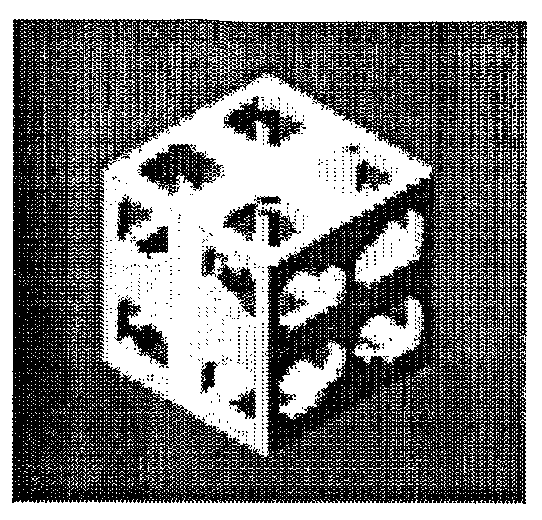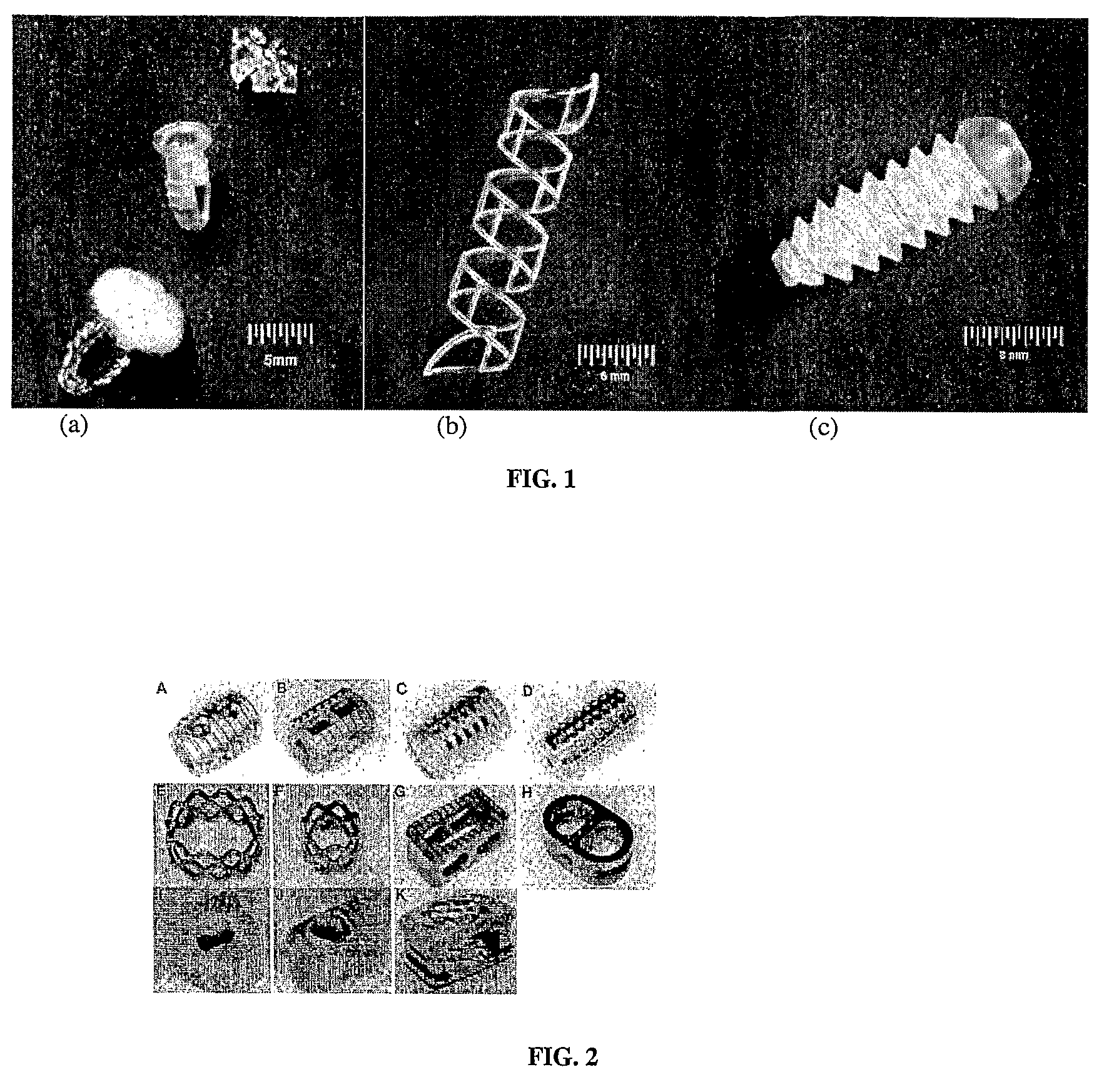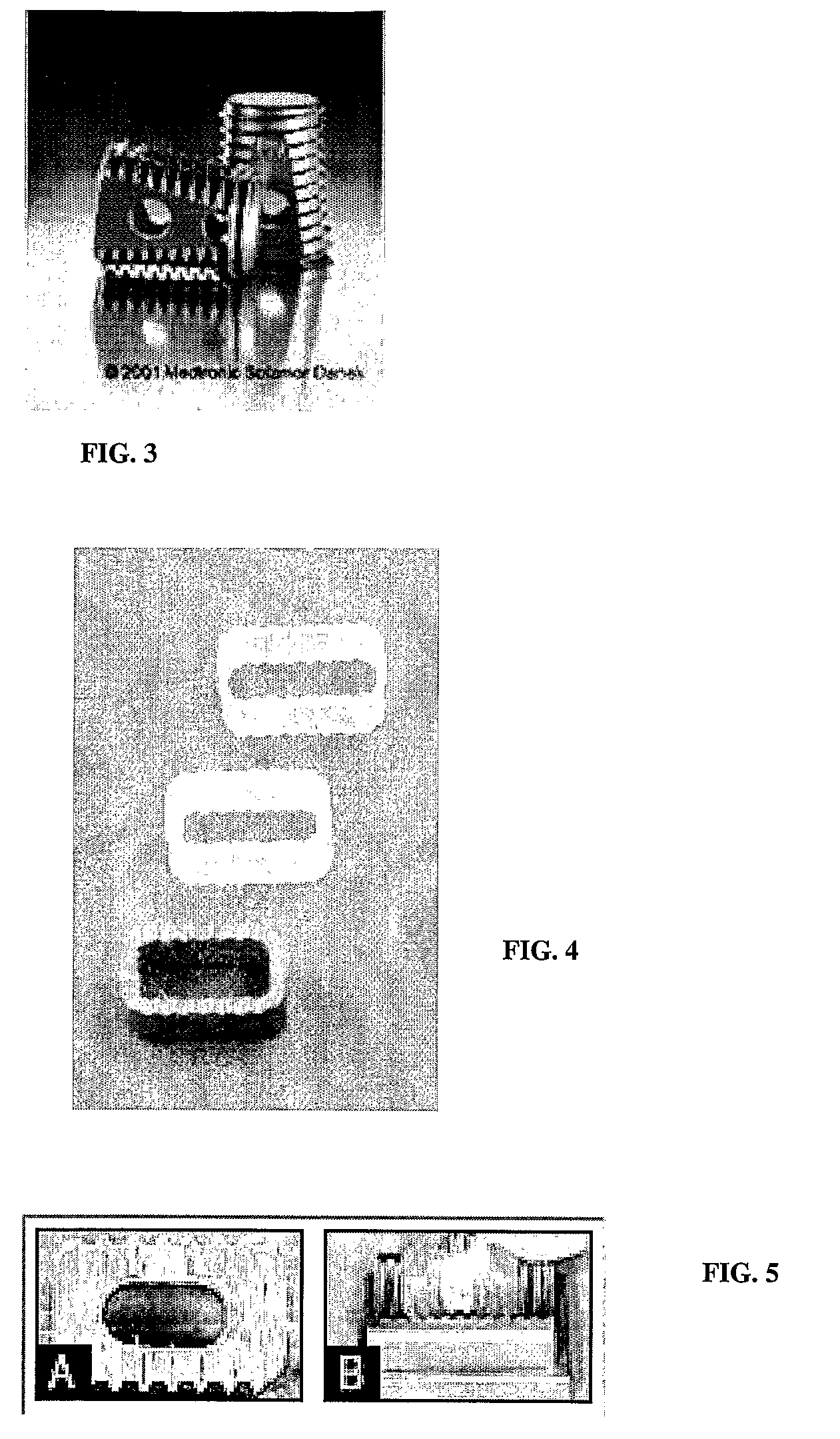Biodegradable/bioresorbable tissue augmentation/reconstruction device
- Summary
- Abstract
- Description
- Claims
- Application Information
AI Technical Summary
Benefits of technology
Problems solved by technology
Method used
Image
Examples
Embodiment Construction
[0042]The following description of the preferred embodiment is merely exemplary in nature and is in no way intended to limit the invention, its application, or uses. For instance, the method of the present invention is useful in designing with any degradable material, such as but not limited to polylactic acid, polyglycolic acid, polycaprolactone, polyanhydride and tri-calcium phosphate.
I. Current Trends and Design Types of Biodegradable / Bioresorbable Tissue Augmentation / Reconstruction Devices
[0043]The use of biodegradable material for tissue augmentation / reconstruction devices has become increasing prevalent to facilitate tissue regeneration and improve integration with host tissues. The concept extended from previous laboratory-scale scaffold implantations to current focuses on the application of devices such as cartilage repair units, rotator cuff anchors, intravascular stents, bone screws and plates made with poly(DL-lactic acid) or poly(L-lactic acid) (FIGS. 1a, 1b, and 1c). Ho...
PUM
| Property | Measurement | Unit |
|---|---|---|
| Weight | aaaaa | aaaaa |
| Electrical conductivity | aaaaa | aaaaa |
| Density | aaaaa | aaaaa |
Abstract
Description
Claims
Application Information
 Login to View More
Login to View More - R&D
- Intellectual Property
- Life Sciences
- Materials
- Tech Scout
- Unparalleled Data Quality
- Higher Quality Content
- 60% Fewer Hallucinations
Browse by: Latest US Patents, China's latest patents, Technical Efficacy Thesaurus, Application Domain, Technology Topic, Popular Technical Reports.
© 2025 PatSnap. All rights reserved.Legal|Privacy policy|Modern Slavery Act Transparency Statement|Sitemap|About US| Contact US: help@patsnap.com



